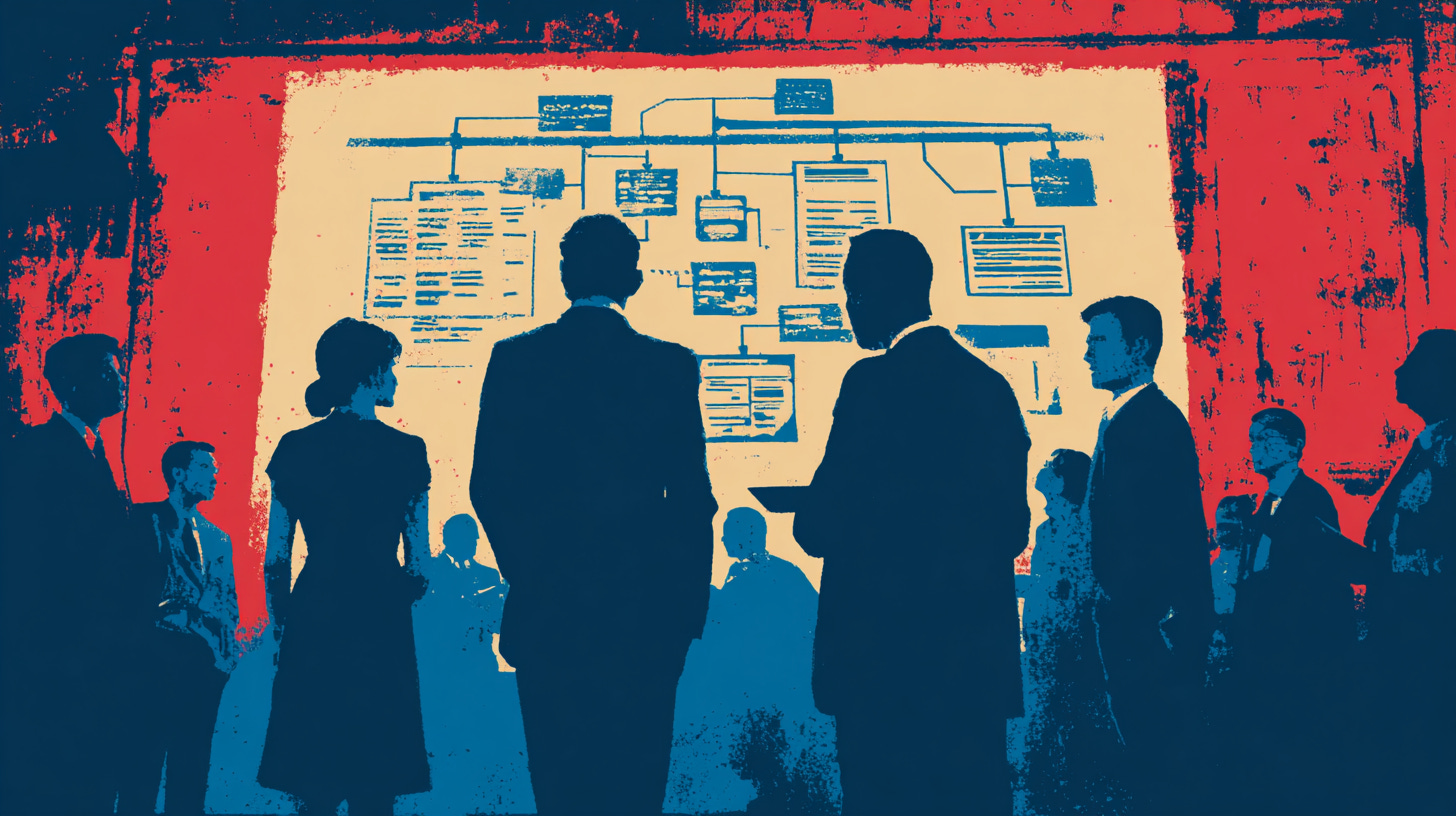When the AI Storyline Hit the CX Wall
What Companies Get Wrong About CX in the AI Era
During a recent CX industry executive workshop, one leader slowly raised his hand. He paused, deciding how blunt he wanted to be.
His team had rolled out an AI-supported experience that checked every internal box. Handle time dropped. Routing behaved. Containment held. The dashboards looked solid.
But complaints increased.
Customers bounced across channels without answers.
Agents escalated cases that used to be simple.
He finally said what everyone was thinking:
“We built what we were asked to build. So why does the experience feel worse?”
The room went quiet.
This question is showing up everywhere.
Companies add technology. Customers feel less supported.
Leaders chase efficiency. Customers try to understand what’s happening.
The gap keeps widening.
Across industries, teams applaud automation metrics while customers feel the journey getting heavier. AI is positioned as progress, but customers wonder if the company is stepping further away from them.
This frustration didn’t begin with AI. It’s just easier to see now.
AI exposes weak points leaders have tolerated for years—gaps, blurred ownership, and structural friction customers have been navigating on their own.
CX loses credibility when AI is used to shield the organization from complexity instead of helping customers move through it with clarity.
The opening leaders didn’t expect
A shift is underway, and every leader I speak with feels the pressure.
Customers want the experience to recognize their intent without forcing them to repeat themselves. They want predictable next steps. They want fewer moments where they’re left guessing.
This is a moment to rebuild around clarity—the very clarity missing in the workshop story.
AI can steady the journey. It can cut through noise created by years of fragmented decisions. It can lower the emotional effort required to get simple things done.
The outcome that matters most is relief.
Customers are tired of carrying the mental load of dealing with a company. Leaders who remove that burden will pull ahead of those measuring progress only through technical milestones.
Meeting customer expectations takes more than another tool. It requires a reset in how organizations think about their own journeys.
The course correction strong CX teams are making
Many organizations feel the urgency but don’t know where to start. The work splits into two areas:
What customers feel in the journey
What teams need to strengthen inside the operation
These two areas are inseparable: sustainable clarity outside requires disciplined clarity inside.
The sections below address both—the external experience that builds trust and the internal work that makes trust reliable.
Customer-facing principles
1. Focus on outcomes, not AI activity.
A high-performing bot doesn’t guarantee the customer feels supported. A polished dashboard doesn’t mean the journey makes sense. The core question is simple: Did this interaction make the customer’s day easier or harder?
2. Remove the hidden work customers still do.
AI reveals problems that long predate it: repeated steps, broken flows, conflicting answers. Some teams try to train the model to cope with the mess. Leading teams fix the mess. They redesign the journey so customers never need to interpret the company’s structure. In many operations, a large share of volume comes from known breakage—solving it changes the experience quickly.
3. Keep people in moments that require assurance.
Billing disputes. Identity concerns. High‑risk decisions. Service failures. These moments carry weight. Leaders who force automation into these spaces damage trust faster than they expect.
4. Be direct about automation.
Customers want clarity. Tell them when they’re speaking with a bot. Tell them when an agent is supported by AI. Tell them when the conversation is being handed off. Unclear transitions raise friction. Straightforward information lowers it.
Internal discipline and governance
1. Plan for recovery before going live.
Models will misread something. They’ll escalate the wrong way. They’ll get stuck. Teams that protect trust design recovery paths early. They ensure customers can reach a person quickly and repair the relationship—not just the record.
2. Add trust indicators to how you measure.
NPS won’t surface early warning signs. Trust issues first appear as hesitation, repeated small frustrations, mild confusion, or quiet disengagement. Teams that monitor these emotional signals act before damage spreads.
3. Define decision rights and revisit them often.
AI gains influence through unnoticed tweaks—a relaxed rule here, a shifted threshold there. Customers live with the consequences. Leading teams treat decision rights as active work, defining what AI can decide and updating boundaries as journeys evolve.
4. Strengthen your human teams.
When AI handles simpler tasks, the work left for people becomes more complex and more emotionally demanding. Agents need stronger judgment and confidence in ambiguous situations. They need coaching that matches this environment. Without it, quality drops even as technology improves.
5. Set an emotional standard for the AI experience.
Once AI becomes part of the journey, customers expect context, recognition, and situational awareness. When those expectations aren’t met, trust erodes. Leading teams define the emotional standard first, then build to support it.
6. Shorten the planning cycle.
Customer expectations move quickly. Long planning cycles fall behind real‑world conditions. High‑performing teams operate in short loops—continuing what works, retiring what increases effort, and adjusting before customers consider leaving.
Strengthening both the journey customers feel and the systems supporting it creates an operating environment where clarity becomes consistent rather than accidental.
Remove the divider between CX leaders and everyone else
Many leaders hope AI will solve their CX issues. It won’t. It highlights them.
If journeys are cluttered, AI makes the clutter obvious.
If the experience lacks clarity, AI magnifies the confusion.
If the culture prioritizes process over judgment, AI becomes another obstacle.
Leaders who succeed take a different path.
They simplify.
They reduce cognitive load.
They build trust through consistency, transparency, and emotional awareness.
The responsibility is demanding: protect customer confidence, use AI to create clarity, and lift the weight customers have been carrying for years.
When used well, AI becomes a source of trust—not a barrier to it.
Trust is the competitive edge AI can amplify, but only if leaders choose clarity over complexity.
So, what’s your experience with adding AI into your CX equation?
What Successful CX Leaders Do on Sundays
DCX Links: Six must-read picks to fuel your leadership journey delivered every Sunday morning. Dive into the latest edition now!
👋 Please Reach Out
I created this newsletter to help customer-obsessed pros like you deliver exceptional experiences and tackle challenges head-on. But honestly? The best part is connecting with awesome, like-minded people—just like you! 😊
Here’s how you can get involved:
Have feedback? Tell me what’s working, what’s not, or what you’d love to see next.
Stuck on something? Whether it’s a CX challenge, strategy question, or team issue, hit me up—I’m here to help.
Just want to say hi? Seriously, don’t be shy. I’d love to connect, share ideas, or even swap success stories.
Your input keeps this newsletter fresh and valuable. Let’s start a conversation—email me, DM me, or comment anytime. Can’t wait to hear from you!
www.marklevy.co
Follow me on Linkedin
Thanks for being here. I’ll see you next Tuesday at 8:15 am ET.
👉 If you enjoyed this newsletter and value this work, please consider forwarding it to your friends and colleagues or sharing it on social media. New to DCX? Sign Up.
✉️ Join 1,450+ CX leaders who stay ahead of the next customer curve.
Human-centered insights. Plug-and-play frameworks. Smart tools that actually work.
All designed for CX pros who want to build with purpose—and deliver with impact.
👉 Subscribe today and get the tools to elevate your strategy (and your sanity).













"The outcome that matters most is relief."
That line needs to be on a billboard.
People get so caught up in deflection metrics that they forget the human on the other end just wants to feel supported, not processed. Great read.